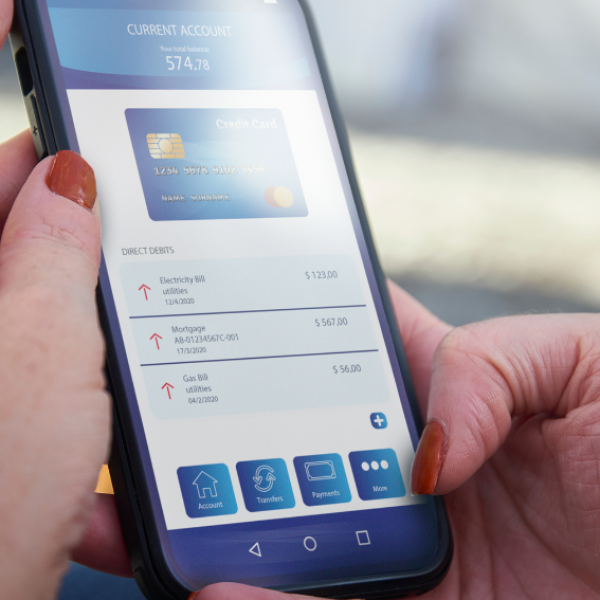Outbound sales, like its most effective practitioners, is too persistent to be overlooked. Despite predictions from over a decade ago that outbound sales would lose relevance with the rise of inbound sales and growth marketing, these predictions have proven to be overstated. Currently, 32% of marketers recognize outbound marketing as effective in generating more leads, and outbound sales strategies continue to play a vital role in many organizations, particularly in the enterprise market segment.
To ensure you don’t miss the significant opportunities this well-established sales model offers, here are some outbound sales techniques and tips designed to boost your revenue performance.
Table of Contents
What are Outbound Sales

Outbound sales involve actively reaching out to potential customers. Instead of waiting for prospects to come across your business, you make the first move by using strategies such as cold calling or cold emailing. The main aim is to engage potential clients and pique their interest in your product. This method focuses on identifying potential customers through detailed buyer personas and customized content, including specific qualifying questions for sales.
In cold calling, you unexpectedly contact prospects. You start the conversation with an introduction and explain why you are calling, then proceed to present your product or service. The goal is to have a productive conversation that encourages them to consider becoming customers. Similarly, cold emailing aims to achieve the same objectives but through personalized emails that are crafted to capture the prospect’s attention and prompt a response or action.
While outbound sales is a proactive approach, inbound sales is more reactive. Sometimes, inbound leads may not meet your criteria for a sales-qualified lead (SQL). It’s still necessary to assess and qualify these leads for potential demonstrations. As a company grows, the likelihood of people discovering your brand on their own decreases. This makes outbound efforts more crucial, enabling you to start more conversations and expand your customer base more quickly.
Outbound sales are ideal for startups that are still building brand recognition and need quick outcomes. It’s particularly beneficial if you’re targeting enterprise companies with extended sales cycles. Additionally, this approach works well for B2B service providers or businesses that cater to a specific, well-defined audience.
Consider using outbound sales to provide a personalized buying experience that includes direct interaction with your sales team.
What Is the Difference Between Outbound and Inbound Sales?
The primary difference between outbound and inbound sales lies in who initiates the contact. In outbound sales, the seller is the first to reach out to potential customers. Conversely, in inbound sales, it is the customers who initiate contact with a business to inquire about its products or services.
Additionally, there are other distinct differences between the two sales strategies. They each have unique goals and advantages.
Outbound sales focus on proactively selling a product or service, whereas inbound sales concentrate on educating potential buyers who have already shown interest. Inbound sales allow representatives to engage with prospects, understand their needs, and build a trusting relationship. In contrast, outbound sales target generating interest and encouraging prospects to seek more information about what’s being offered.
Both strategies also face specific challenges. Outbound sales demand significant resources and time as representatives need to assist prospects throughout the purchasing process. Inbound sales, on the other hand, require a well-established online presence and strong analytics, which may delay the realization of return on investment compared to outbound methods.
What Are the Advantages of Using Outbound Sales Over Inbound Sales?

Outbound sales offer several benefits over inbound sales, such as the ability to proactively initiate contact with potential customers and achieve quicker outcomes. They also facilitate easier entry into new markets compared to inbound strategies. Here are some additional advantages of outbound sales:
- Simplicity of execution: Techniques such as advertising in newspapers or sending out letters are typically easier to put into practice than inbound strategies.
- Expanding customer base: Outbound sales tactics allow sales representatives to connect with potential customers who might not yet be familiar with their product or service. In contrast, inbound sales target only those who have already expressed interest in the company.
- Efficiency through automation: Outbound sales campaigns often support the automation of repetitive tasks, enhancing efficiency. Successful sales teams frequently utilize automation for activities like tracking prospect behavior, scheduling follow-ups, sending tailored emails, and making automated phone calls. This automation saves valuable time, allowing you to concentrate on relationship building and closing sales.
- Speed of results: Unlike inbound strategies, which can be slow to generate sales, outbound tactics such as cold calling and emailing can deliver rapid results for a sales team.
Best Outbound Sales Practices
The success of your marketing campaigns largely relies on the effectiveness of your outbound sales strategies. Therefore, it is crucial to utilize proven outbound sales methods that can deliver successful outcomes.
Here are several effective outbound sales techniques to consider:
1. Identify Your Potential Customers
The first essential step in any outbound sales strategy is to pinpoint who your potential customers might be. Start by creating an ideal customer profile and detailed buyer personas that encapsulate the characteristics of your target audience.
To discover who your potential customers are, analyze your existing customers. Look for patterns and common traits among those who have previously made purchases. Collect data about their company size, geographic location, industry, roles, and job titles.
Additionally, consider psychographic details such as:
- What drives their decisions to buy products like yours?
- What challenges do they encounter?
- What factors are crucial in their purchasing decisions?
From this information, develop several fictional yet realistic buyer personas. Assign names and incorporate specific details to gain a clearer understanding of your ideal customers. When compiling your initial list of leads, consistently refer to these buyer personas. Focus on prospects that align closely with your ideal customer profile. This approach helps to concentrate your efforts on engaging those most likely to need and be interested in what you offer.
2. Outbound Lead Prospecting
After identifying your target customer profiles, the next step is lead prospecting. This involves collecting the necessary contact information and data required to initiate contact.
You can utilize several sources to compile your lead list:
- Pay-per-click ads: Gather contact information from individuals who click on your ads and visit your site. Ensure your ads are targeted towards your buyer personas.
- Your website: Implement lead capture forms and analytics to collect data from visitors, particularly those viewing key product and service pages.
- Purchased contact lists: Many providers offer lists that can be filtered by demographics, job roles, industries, etc. Choose lists that match your buyer personas.
- Events: Obtain business cards and scan attendee lists from trade shows, conferences, webinars, and other events. These attendees often align with your customer profile.
- Referrals: Encourage satisfied customers to introduce you to peers who might be interested in your services.
- LinkedIn: Use LinkedIn to find contacts with relevant job titles and companies. Tools like Sales Navigator can help automate this process.
As you compile leads from these sources, organize them into a database or lead list. Be sure to include all essential contact details such as full name, job title, company, phone number, email, and social media handles.
The more information you collect on each lead, the more effectively you can prioritize and tailor your outreach for better sales results.
3. Customize Your Pitch
Once your lead list is prepared, it’s time to initiate sales conversations.
You can choose from various methods of cold outreach, including cold emailing, cold calling, live chat, and LinkedIn messaging.
For instance, to effectively engage someone via email, it’s essential to personalize the content with specific details relevant to them. This goes beyond merely including their name and position. Aim to address common challenges faced by businesses in their sector.
Your emails should be crafted specifically for each recipient, as mass-sent, general messages are often overlooked. Your focus shouldn’t be on selling your product or service immediately, but rather on offering solutions to issues the recipient may be dealing with.
For instance, invest time in understanding the unique needs and challenges of your potential clients. Construct an email that speaks directly to these points, showing how your offerings can provide solutions. Ensure you include a clear call-to-action, directing the recipient on the next steps.
Consider enhancing your approach for significant prospects by setting up a customized digital sales room.
For important accounts, differentiate yourself by establishing a digital sales room. This online space should contain all necessary information about your offering, including demo videos, case studies, and pricing details. Effective sales representatives often start with a basic format and then customize it as they interact with potential clients. This tailored approach not only sets you apart from competitors but also demonstrates a deep understanding of the prospect’s business needs.
Regardless of the method you choose, the key is to ensure your outreach is personalized and relevant to each prospect. To tailor your communications, conduct thorough research to align your messages with the challenges your prospect might be facing.
Provide insights and value right away to capture their attention. It’s crucial to understand their specific issues and needs and to verify that they meet the criteria of your ideal buyer persona.
Keep in mind that cold outreach often involves volume—the more conversations you engage in, the more opportunities you are likely to find.
4. Build Trust and Communicate Value
When contacting someone new through a cold call or email, remember that you are initially unfamiliar to them. Therefore, it’s crucial to establish trust by showing your expertise, authority, or connections (like mutual acquaintances or shared groups).
You should research your contact beforehand.
Moving to understanding pain points: How does your product or service solve your prospect’s issues? Both in cold and warm outreach, your prospect is primarily interested in “What’s in it for me?” If you can’t provide a compelling answer, you might as well not send the email or end the call.
A key tip is to clearly communicate your value proposition. This should stand out from the many competitors you have, or else it will be difficult to avoid appearing as just another sales call or email.
Whether you’re connecting via phone, video, or email, your prospect is likely busy with numerous other tasks. If your message doesn’t quickly convey why they should engage in a conversation with you, they’ll ignore it. Keep your message concise, direct, and make sure your request is clear from the start.
Be straightforward.
We all receive numerous cold emails and marketing attempts daily. Instead of lengthy emails trying to persuade the recipient to reply, keep your communication brief. Clearly state why you are reaching out and what action you would like them to take.
Here are some practical tips for improving your sales pitch:
- Start with the benefits – Clearly outline the tangible benefits and results your prospect can expect from your solution. Highlight the value upfront before discussing product features.
- Engage with discovery questions – Facilitate a two-way conversation by asking questions that delve deeper into the prospect’s requirements and the reasons behind their interest in your product.
- Use storytelling – Employ anecdotes and case studies that demonstrate how you’ve successfully resolved issues for similar customers. This helps create a relatable context for your prospects.
- Tailor your sales materials – Create customized proposals and quotes that are specifically designed for each prospect.
- Respond to objections openly – When prospects express concerns, address them honestly and reaffirm the benefits your solution offers.
- Rehearse your pitch – Practice delivering your pitch aloud and with peers to fine-tune your messaging and presentation skills.
5. Sales Pitches and Demonstrations
Even after a prospect agrees to a demo, it’s important to maintain a strong persuasive effort. While their interest is an encouraging sign, you’ll need to present several demos to different team members, address their inquiries, negotiate terms, and overcome any additional objections they might have. If the account includes multiple decision-makers, this can result in an increased number of calls and demonstrations, potentially extending the duration of the sales cycle.
To enhance your sales pitch and demo processes, consider incorporating the following insights and strategies drawn from current best practices:
- Prepare Thoroughly: Before the demo, gather detailed information about the prospect’s business, their role, and their industry. This preparation enables you to tailor the discussion and demonstrate your product’s direct relevance to their operations.
- Dynamic Delivery Options: Offer various delivery methods for your demos, such as live video chats, pre-recorded videos, or in-person presentations, depending on what best suits your prospect’s preferences.
- Engage Throughout the Demo: Keep the demo conversational. Ask questions, invite feedback, and explain the functionality clearly to ensure the prospect understands the value of what they’re seeing. It’s important to make the demo a two-way interaction rather than a monologue.
- Effective Follow-Up: Post-demo, follow up with a concise summary of what was discussed, reiterate how your product solves their problem, and outline the next steps. This keeps your proposal fresh in their mind and maintains momentum in the sales cycle.
- Leverage Data-Driven Insights: Use data from previous demos to refine your approach. Understanding which features engage customers the most can help you focus on these areas in future presentations.
6. Closing the Deal
If the sales calls and meetings are effective, it’s time to finalize the contract. The deal is complete, and your sales team has secured a sale. There is still much to do after this point, but your sales team’s role in the process is finished.
After closing a deal, consider asking for referrals.
Your connection with the customer does not end after a deal is closed. You can leverage their positive experience by requesting a referral. Many customers are ready to provide referrals, yet only a few sales representatives take the initiative to ask. Therefore, do not hesitate to make the request.
However, remember that timing is crucial. Asking for referrals immediately after a deal can be very effective as customers are likely still positive about their recent experience and are more receptive to your request. It’s important to approach them with appreciation for their business and express your willingness to assist others who have similar needs.
Tips to Succeed in Outbound Sales

- Maintain structure with a script.
To save time, use a script as a reference during your calls. While customization is important as we have mentioned earlier, having a foundational script to adapt is crucial. A call script simplifies leading the conversation and ensures you cover all your talking points efficiently. It also helps to standardize calls across your sales team, leading to more consistent results from one agent to another.
- Be prepared for rejections.
Do not let objections end your phone calls prematurely. Prepare by identifying common objections and crafting responses to them.
Consider effective strategies to address frequent objections and practice these responses with a team member.
- Improve your cold-calling skills.
Cold calling is one of the most direct methods to assess the interest of your leads. This technique remains effective across businesses of various sizes. Start by organizing the format of your sales calls, utilize established sales script templates for crafting your own, and begin making calls.
Consider investing in sales call software that records calls, allows you to leave pre-recorded voicemails, and manages administrative tasks to help increase your call volume.
- Don’t forget cold messaging.
Cold messaging on DM or social media often leads to unsolicited messages in your Instagram or LinkedIn inbox, tarnishing its reputation. Instead of immediately pitching your service, engage with your target audience by watching their stories, commenting on posts, and starting relevant conversations. Ask leading questions to gauge their interest and leave the conversation positively, keeping the door open for future opportunities.
To enhance your outreach, qualify your audience with strategic questions, nurture leads through stories and posts, and initiate conversations that encourage interaction.
- Avoid a subpar sales team.
Reject the idea of a substandard sales team. A well-functioning sales team is essential for any business, requiring more than just theoretically trained experts who engage in cold emailing or call new leads.
A good sales team is skilled in generating and converting high-quality leads, and maintaining strong relationships with potential clients, whether through virtual or face-to-face interactions. A poor sales team, on the other hand, can significantly harm your business, wasting resources and failing to deliver satisfactory results. Constantly changing sales agencies every year is also inefficient and costly. Thus, it’s vital to recruit the right people from the start.
To manage a sales team effectively, set clear goals, provide essential tools, offer continuous training, give regular feedback, acknowledge achievements, and recruit skilled, experienced workers. Keep open communication, use incentives, track performance, and establish a thorough onboarding process.
- Use social media channels.
Engaging with potential customers on social platforms is a powerful way to establish relationships and promote your business. This strategy, known as social selling, is effective for generating leads.
To maximize the benefits of social media, start by gathering your most effective tips or advice related to your area of expertise. Then, create high-quality content designed to help your audience.
For example, LinkedIn is ideal for networking, sharing industry insights, and exploring opportunities to build professional relationships. It also serves as an effective platform for promoting your products in the B2B sector.
- Implement account-based marketing.
Focus on building relationships with an entire company rather than just an individual. After identifying a list of qualified leads, go to LinkedIn to find additional contacts from the same organization and include them in your campaign. For larger enterprises, consider creating an account map to reach multiple decision-makers.
- Showcase your expertise in a podcast.
Podcasts can effectively generate new business opportunities. Creating a podcast involves significant effort, including content planning, guest coordination, audience development, and distribution across various platforms.
Opting to be a guest on an existing podcast can be beneficial. It allows you to connect with an established, interested, and engaged audience. This approach also helps promote your brand and gain trust through the host’s endorsement. Compile a list of podcasts that align with your industry, business goals, and niche.
- Automate your process.
Managing a large volume of leads can be challenging, even with a substantial sales team. A practical solution is to use CRM software to automate your sales processes. Automation of outbound sales can remove the need for repetitive tasks like bulk emailing and manual phone dialing.
This allows your sales developers and representatives to concentrate on more crucial activities, such as closing deals.
- Do not remove prospects from your list.
Many individuals on your prospecting list may not respond to your outreach efforts. Even with persistent follow-up, numerous prospects might continue to disregard your messages. However, this does not mean they will never engage with you in the future.
Therefore, instead of deleting your prospecting lists after a campaign concludes, transfer those who have not responded to a long-term follow-up list. Consider reaching out to them again after a few months or more. They could be more receptive to your message at that time.
- Monitor prospecting progress.
Generating and nurturing leads into potential customers is generally a lengthy process with potential for confusion. For instance, two sales representatives might inadvertently work on the same prospect.
Automation tools assist in tracking the real-time progress of prospecting and identifying which leads have been addressed. Additionally, these tools allow for monitoring the sales achievements of team members and rewarding their efforts.
Conclusion
Outbound sales remain a critical element of business strategies, ensuring consistent lead generation and customer engagement. Despite the dominance of inbound marketing, outbound techniques like cold calling and emailing have proven their worth, especially for startups and B2B enterprises targeting specific audiences. Implementing best practices, such as identifying potential customers, personalizing pitches, and leveraging automation, can significantly enhance sales outcomes.
Maintaining a structured approach, preparing for rejections, and avoiding a subpar sales team are essential for sustained success. Additionally, utilizing social media, podcasts, and account-based marketing can expand reach and foster strong relationships. By refining these strategies and continuously engaging with prospects, businesses can maximize the effectiveness of their outbound sales efforts.
Frequently Asked Questions
How should I prepare for outbound sales calls?
Start by understanding your potential customer’s profile and creating an Ideal Customer Profile (ICP). Research prospects using tools like LinkedIn and social media to tailor your message. During the call, begin with relevant topics like their recent business achievements to focus on solving their issues.
What techniques can improve outbound email campaigns?
Personalize your messages to address the recipient’s specific needs and pain points. Use storytelling to guide them from identifying a problem to discovering your solution. Include interactive elements like surveys or clickable content to increase engagement and ensure consistent follow-up.
How can I effectively handle objections in outbound sales?
Use techniques like “Feel, Felt, Found.” Acknowledge the prospect’s concerns, relate them to a similar past situation, and share a positive outcome from another client. This shows understanding and provides evidence of benefits, helping you navigate objections and keep the conversation moving.
What tools and software are essential for outbound sales?
Essential tools include Customer Relationship Management (CRM) software to track interactions and manage follow-ups. Automated tools for email campaigns, auto-dialing for calls, and lead generation can increase efficiency and allow reps to focus on closing deals.










